|

|
CORNWALL
Cornwall (shown in the figure in red) is the most south-western peninsula of Great Britain and is separated from mainland Britain by the river Tamar.
The Tamar defines and bisects the boundary between Cornwall and the rest of Britain, with two bridges providing the only entrance into Cornwall from Britain.
Cornwall is about 70 miles long and 15 miles wide, with an area of 1,376 square miles.
Cornwall has a local population of about 500,000 residents, which swells to about 6,000,000 residents during the summer tourist season. |
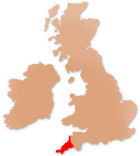 |
| |
Top of Page |
| |
|
THE CORNISH FLAG
The St. Piran's Flag is the flag of Cornwall and is reputed to have originated prior to 1188.
The St. Piran's flag is supposed to symbolize white molten tin pouring from black ore.
St Piran was said to have re-taught the Cornish how to smelt tin from ore, when the skill was forgotten after Roman times.
In recognition for his contributions to Cornwall, St. Piran is remembered on March 5th on St Piran's day. |
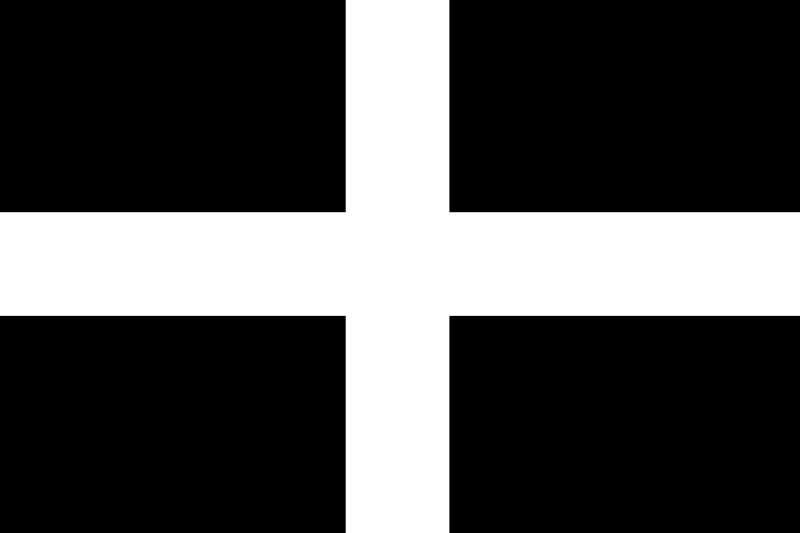 |
| |
Top of Page |
| |
|
THE CORNISH CREST
The Cornish crest depicts both a fisherman and a tin miner - which represent the two historic industries for which Cornwall was best known.
The Cornish badge in the center of the crest highlights the 15 bezants, or gold coins, said to have been the ransom to the Saracens for the release of the Earl of Cornwall in the ninth century.
The Cornish bird, the Chough, is shown at the top of the crest. The Chough is a member of the crow family, and is said to be the bird that King Arthur transformed into when he died.
|
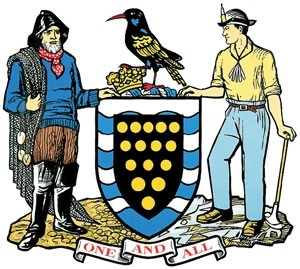 |
| |
Top of Page |
| |
|
TIN MINING
Cornwall represents one of the largest and longest mined regions in the world. Tin mining in Cornwall dates back to the Bronze age (2000 years B.C.).
During the region's tin mining hay-day there were over 600 engine houses located around the county. A large number of engine houses can still be seen, dotted along the coast line and inland.
Unfortunately, for the local economy, tin is no longer mined in Cornwall. The last active tin mine, the South Crofty Mine, which closed in 1998.
Tin mining became uneconomical due to the availability of cheaper Australian imports. |
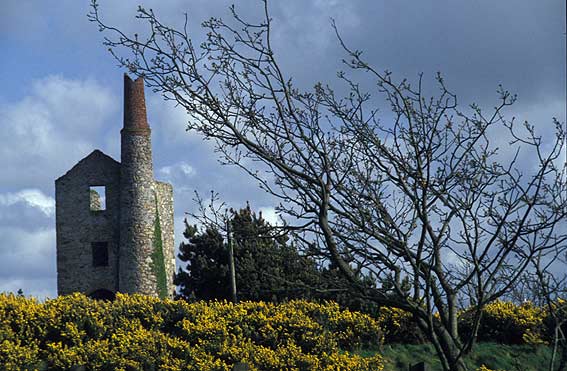 |
| |
Top of Page |
| |
|
FISHING
Another of the chief industries in Cornwall is the fishing industry. At it's zenith, at around 1871, Cornwall exported over 16,000 tons of pilchards (sardines) per year.
Based upon the value of the fish sold, Newlyn harbor was one of the largest fishing ports in Britain.
Due to European Union fishing quotas, the fishing industry within Cornwall is now considerably smaller. However, Cornwall is still full of numerous picturesque fishing ports - such as Porthleven, near Helston. |
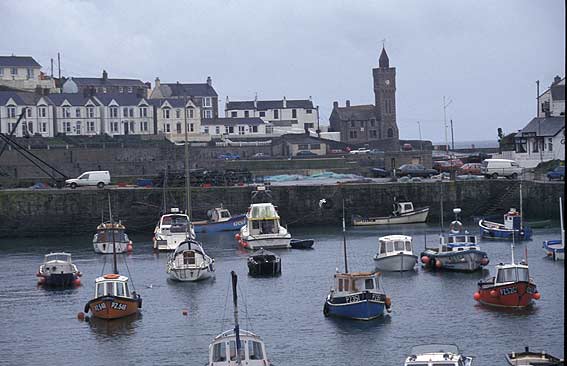 |
| |
Top of Page |
| |
|
THE CORNISH LANGUAGE & THE CELTS
Cornwall has a long history of habitation and was inhabited prior to the bronze age.
Cornwall represents one of the four Celtic settlements within Britain. The Cornish Celts bear most similarity to the Welsh, while the Irish and Scottish clans share the most similar in origin.
The Celts brought their language with them to Cornwall, which not surprisingly is similar to Welsh.
Cornish was commonly spoken in Cornwall until the 18th century, but went through a sharp decline due to attacks on Cornwall and its language by the English, who were interested in Cornwall, like the Romans, for its natural resources.
The Cornish language is now undergoing a resurgence and is taught in schools.
|
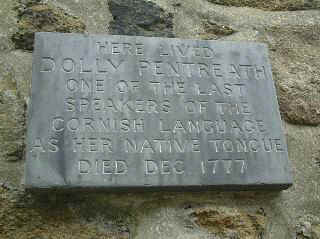 |
| |
Top of Page |
| |
|
STANDING STONES
Cornwall has a long history of habitation, dating back to the bronze age. Signs of this ancient habitation can be seen through the large number of standing stones which dot the landscape.
Lanyon Quoit is one of the best known sets of standing stones in Cornwall and forms a quoit, an ancient burial chamber.
The configuration of the stones is not, however, original; as the quoit fell down in a storm in 1815.
The quoit was reassembled 9 years after its collapse, but without one of the supporting stones, which was damaged. It is now no longer possible to pass under the quoit riding on your horse. |
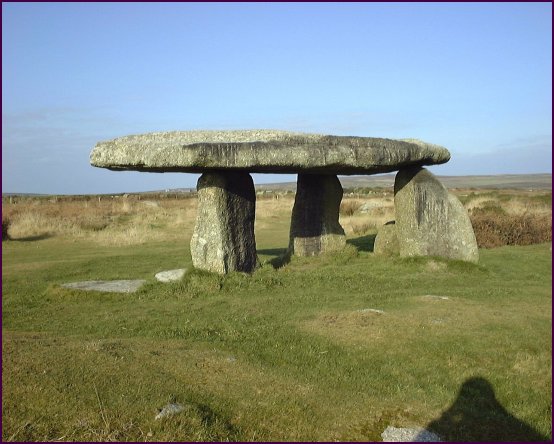 |
| |
Top of Page |
| |
|
TOURISM
Due to Cornwall's picturesque scenery, large number of sandy beaches and temperate micro-climate, Cornwall is a mecca for tourists.
Every year over 5,000,000 tourists flock to Cornwall, most of which originate from mainland Britain. In fact more Brits. visit Cornwall for their vacations than Spain. |
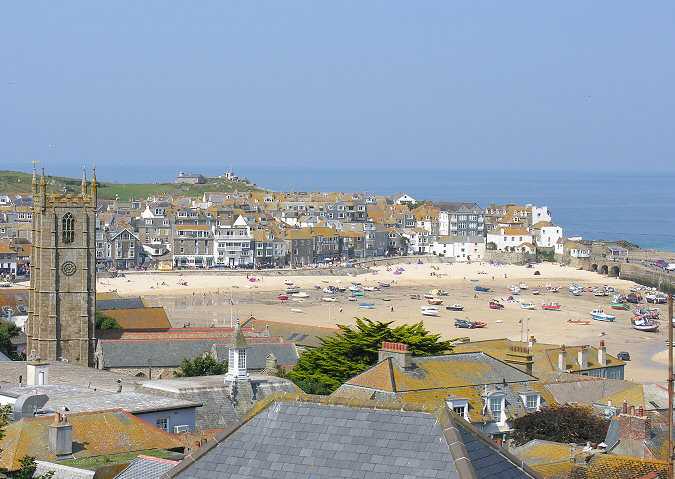 |
| |
Top of Page |
| |
|
RICHES TO RAGS
Although picturesque, Cornwall is the poorest county within the UK and one of the poorest regions within Europe.
Cornwall currently receives
"Objective One" funding from the E.U. to help bolster its local economy.
Although Cornwall was at the forefront of the industrial revolution and produced huge quantities of tin and fish, the generated wealth left the county; with the English.
Like the other Celtic counties, tensions run high against the English, and Cornwall has striven for independence from England.
Given Cornwall's relative small native population and poor economic state it is unlikely that Cornwall will be as successful as either Scotland or Wales in their endeavor. |
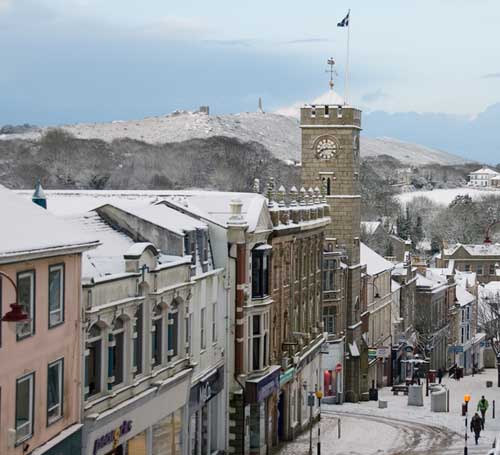 |
| |
Top of Page |
| |
|
THE SETTING SUN?
The signs of industrialization can readily be seen over the whole expanse of Cornwall. Numerous abandoned, viaducts, train stations and mine workings are readily seen across the whole county.
Services within Cornwall have declined over the decades, as the industries which supported the economy failed.
Now all of the tin mines have closed and many fishing companies and local small farms have gone.
Tourism provides a significant seasonal boost to the local economy, which ironically showcases the whimsical signs of abandoned forgotten eras and cultures. |
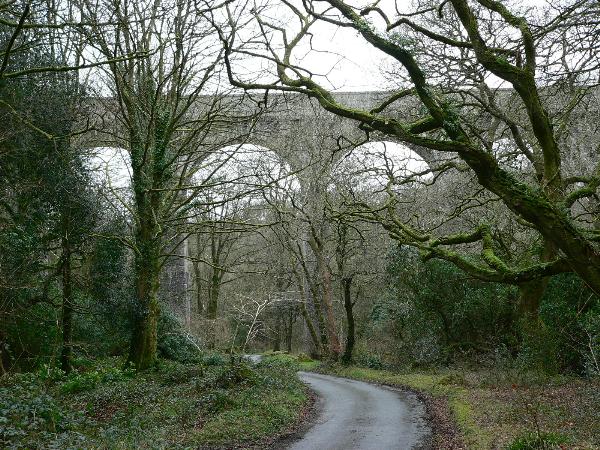 |
| |
Top of Page |
|